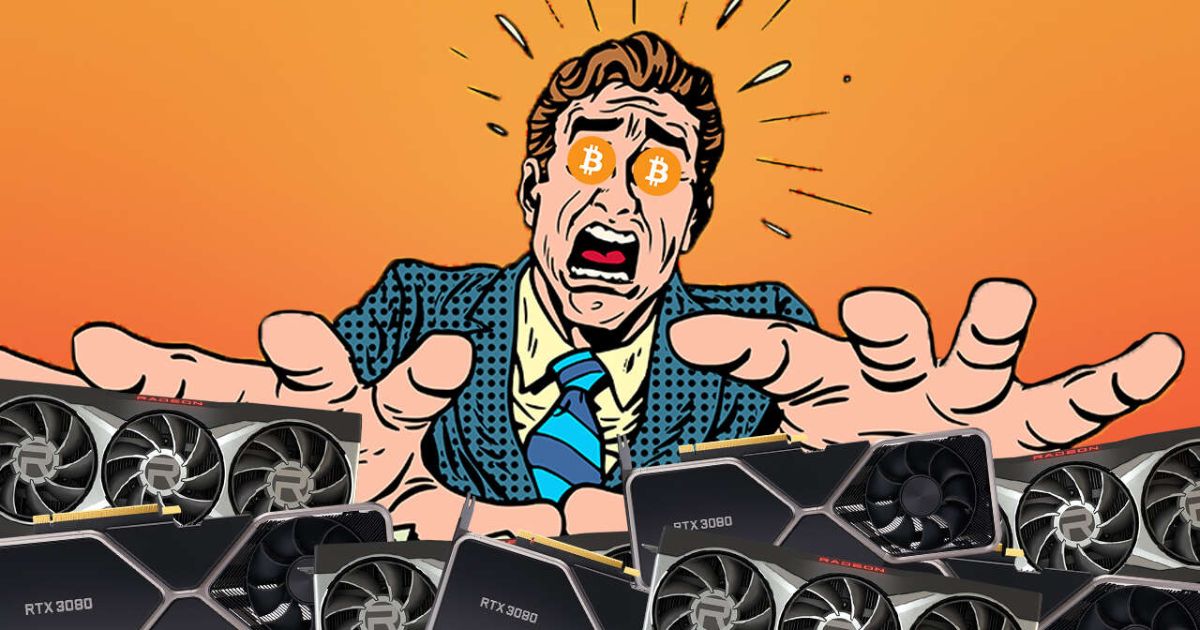Have you ever wondered why high-performance graphics cards come with such steep price tags? As gamers and creatives strive for the best visual experiences, the latest GPUs seem perpetually out of budgetary reach. While next-gen graphics seem the stuff of dreams, a deeper look reveals rational reasons for their hefty cost beyond corporate greed or planned obsolescence.
This comprehensive guide explores the complex interplay of technical, economic, and market factors driving graphics card pricing constraints. We’ll analyze the research and development costs, cutting-edge manufacturing demands, commodity shortages, and competitive landscape pressuring manufacturers. By understanding underlying realities shaping budgets, consumers can make informed purchasing choices aligning value with visual fidelity needs and project timelines.
Key Points about Why Graphics Cards Are So Expensive
- High research and development costs
- Cutting-edge manufacturing processes
- Short product lifecycles
- Cryptocurrency mining demand
- Total cost of ownership
- Supply chain issues
- Residual value
- Used market options
A Brief History of Graphics Cards

Graphics processing units or GPUs have powered computer displays for over three decades since their introduction in the 1980s. Earliest standalone cards focused on discrete VGA functionality away from central processors. However, 3D acceleration emerged as the killer application of the 1990s with first-generation cards like the 3dfx Voodoo.
Reset Graphic Cards: If you’re experiencing issues with your graphics card such as display errors, artifacts, or crashes, one troubleshooting step to try is to reset the graphics card to its default settings. This can be done through the device management menu in the operating system’s control panel. Resetting the card may help resolve driver or setting conflicts that could be causing problems.
Nvidia seized the burgeoning gaming market in the late 90s with their Riva TNT series establishing the GPU brand. Meanwhile, ATI (now AMD) competed fiercely to push innovation as the new millennium dawned. Both pioneered breakthrough technologies enabling photorealistic imagery still standard decades later.
R&D – The Foundation of High Performance
The relentless advancement fueling performance leaps poses immense research and development costs for GPU manufacturers. While processor generations last years, competitive pressures demand new graphics silicon refreshes within mere months. Each architecture transition demands billions in engineering expenses recouped over a product’s lifespan through sales volumes.
Designing industry-leading technologies from the ground up taxes even the largest organizations. Nvidia and AMD employ thousands of PhDs optimizing nanometer-scale circuits, parallel computing algorithms, and next-gen memory interfaces. Their innovations power everything from killer gaming to artificial intelligence revolutionizing industries.
Cutting-Edge Manufacturing Processes
| Process Node | Feature Size | Cost of Production |
| 7nm | Transistors spaced 7 nm apart | $150 million per month to operate fab |
| 5nm | Transistors spaced 5 nm apart | $200 million per month to operate fab |
| 3nm | Transistors spaced 3 nm apart | Projected $300 million per month to operate fab |
Manufacturing modern GPU silicon using the most advanced process nodes available compounds costs further. Leading-edge chips deploy intricate circuit designs at atomic scales mere billionths of a meter wide. Producing such complexity reliably and affordably requires foundry partnerships on the technological frontier.
TSMC custom manufactures Nvidia and AMD graphics processors, leveraging multi-billion dollar “fabs” crafted to near perfection. Fabricating the smallest interconnects and millions of transistors per die at these facilities demands continuous investment raising overhead passed to customers. Accessing leading processes also incurs licensing payments and minimum component order volumes concentrating risks.
Supply Chain Disruptions Impact Availability
Ongoing global supply chain disruption since 2020 exacerbated GPU pricing pain points. From lockdowns to shipping delays, circumstances restricted components from reaching manufacturers on time. Constrained supply struggles meet escalating demand for cryptocurrency mining and pandemic hobbies like gaming.
Compounding matters, GPUs depend heavily on commodity semiconductors undergoing shortages themselves. Memory chips, controllers, and other shared parts drain inventory while price spikes persist well into 2022. Combined strains inflate new product prices when volumes cannot offset elevated component, manufacturing, and operational expenses.
The Competitive Marketplace
Graphics cards exist within intensely competitive technology markets marked by short product lifecycles. Nvidia and AMD continually innovate staying ahead while undercutting competitors, aided by heavy R&D investments recouped over years through substantial sales. Their premium offerings target high-margin channels fueling further progress.
However, these innovation-fueled businesses require massive scale recouping sunk costs in development. At the same time, maintaining competitive positioning versus intensifying rivals presses constant price reductions. Together these forces concentrate available margins over larger customer bases inevitably driving higher list prices.
Secondary Markets Complications
Exacerbating GPU pricing further, third parties commandeer bulk inventory distorting intended consumer availability. Escalating cryptocurrency values drew mass miners hoarding cards exclusively for currency farming throughout 2021. Their vast purchase volumes deprived gamers while driving scalper resales on eBay far above MSRP.
Some manufacturers even produced specialized mining variants avoiding gamer hostility over stock shortfalls. However, cyclic currency values combined with increased difficulty overloading power grids now curb commercial mining profitability cooling secondary demand surges temporarily. Manufacturers work discouraging bulk purchases restoring supply-demand balance for customers.
Understanding Total Cost of Ownership
Beyond base prices, the total cost considerations for graphics cards further rationalize expense levels for discerning buyers. High-fidelity experiences require robust power supplies, cooling solutions, and platform modifications increasing long-term investment. 4K/144Hz gaming also demands cutting-edge processors and displays elevating desktop build budgets accordingly.
Many critics downplay auxiliary costs associated with achieving targeted performance levels and visual quality over hardware’s usable lifespan. Depreciation happens gradually through regular driver optimizations too. Overall ownership factors better inform spending aligned fulfilling needs sustainably rather than deceptively inflated perceptions of “overpricing.”
Considering Value Proposition Over Time
Viewing graphics card expenses more holistically, prices reasonably correspond to delivering multi-year value as core performance platforms. Even mid-range $300-$500 models provide smooth 1440p+ gaming for half a decade or more. Top $700-$1000 SKUs remain viable even longer thanks to continual optimizations maintaining relevance.
Meanwhile, integrated GPUs struggle to run current titles acceptably within just a couple of years as silicon sizes shrink on processors. The high initial investment for discrete solutions delivers sustained high-fidelity experiences worthy of creative works or competitive esports far surpassing short-term budget priorities alone. Understanding nuanced value drivers better shapes priorities aligning hardware decisions with visual quality needs over the long run.
Assessing Used Graphics Card Options
For budget-conscious buyers, exploring the used graphics card market offers attractive alternatives to expensive new parts. Sites like eBay aggregate individual and commercial seller inventory continually refreshed. Careful inspection helps avoid problematic items while savings reach 30-50% off original pricing.
One to two-year-old mid-range models often meet modern gameplay needs impressively. Checking seller history, rigorous testing upon receipt, and full warranty validation mitigate risks. With maintenance like new thermal paste applied, used cards extend affordability upgrading systems yearly rather than multi-year waits otherwise. Combined discounts and residual value retention make incremental plans practical gratifying itch for improved imagery sooner.
The Realities Shaping Costs

Many factors influence the pricing of graphics cards. Understanding these realities helps manage expectations and make informed purchasing decisions.
| Reality | Impact on Cost |
| Research & Development | Billions spent designing each new architecture results in high fixed costs distributed over sales. |
| Manufacturing Process | Producing at the smallest nodes like 5nm/7nm costs hundreds of millions per month in a fab operation. |
| Supply Chain Issues | Constraints meeting escalating demand from mining/gaming concentrate costs onto fewer available cards. |
| Short Lifecycles | Frequent refreshes require high volume sales sooner recouping R&D versus multi-year CPU generations. |
| Competition | New entrants force price reductions while margins fund future innovation in a rapidly evolving market. |
| Cryptocurrency Demand | Periods of bulk purchases distort availability for gamers while inflating secondary prices. |
| Total Ownership | Billions spent designing each new architecture result in high fixed costs distributed over sales. |
Appreciating these nuanced realities dispels myths of planned obsolescence or price-gouging. The table provides a succinct overview to help shape priorities aligning values and needs realistically.
FAQ’s
Why are graphics card prices falling?
Prices are falling due to reduced cryptocurrency mining demand and increased supply from manufacturers. The overheating demand of 2021 has cooled.
Why is RTX more expensive than GTX?
RTX cards feature ray tracing cores and tensor cores which accelerate new rendering techniques like ray tracing. These complex extra components increase production costs.
Will GPUs get cheaper?
Overall prices should trend downward over time as manufacturing processes advance, but the most cutting-edge models available will likely remain expensive due to R&D and production costs. Mid-range options provide good performance at affordable prices.
Conclusion
High-fidelity computing comes at a premium cost appropriately reflecting cutting-edge R&D and manufacturing delivering powerful performance platforms year after year. While new hardware prices face constraints, strategic planning like considering used options or waiting for price drops achieves visually pleasing systems aligned to realistic budgets over the longer term.
Appreciating graphics card value holistically better enables discerning investments satisfying passion for imagery quality through the creative years ahead. With patience and diligent research maximizing value, technology ultimately grants access to immersive worlds previously unimaginable even on modest hardware updates. Understanding realities shaping costs cultivates gratitude for constant progress fueling imagination across industries and enriching global communities.











